While waiting on some other parts to come in (more on that this weekend), I decided to go ahead and clean up the steering knuckles. I don't know if you can tell from the pictures or not, but they were somewhat caked and greasy. I've been wanting for some time to try some low-effort chemical stripping, so after some research, I headed over to The Home Depot to pick up some drain cleaner and some etcher/rust remover. It is amazing what you can find out by using google and looking at the MSDS information for some of these chemicals. All I can say is that I am pretty pleased with the results. No scrubbing or brushing, just letting things soak.
Knuckles Before:
Home Depot Chemicals - the 10 min drain cleaner is mainly Sodium Hydroxide, commonly known as Lye, and the etcher is primarily phosphoric acid:
NOTE: FOR SAFETY REASONS YOU, AS I DO, MUST WEAR PROPER PROTECTIVE EQUIPMENT WHEN DEALING WITH CHEMICALS THIS DANGEROUS, AND THEY ARE DANGEROUS. SAFETY GLASSES AND HEAVY DUTY CHEMICAL RESISTANT GLOVES (NOT LATEX EXAM GLOVES) ARE A MUST. THIS STUFF MUST BE KEPT OUT OF REACH OF CHILDREN AND ANIMALS.
I purchased two five gallon buckets with lids (you do not want anyone messing with this stuff) for my tanks and put about four gallons of water in the first "caustic" tank. I then sprinkled in about 1/2 of a can of the drain cleaner. I let the knuckles soak over night in that. This afternoon, I put about two gallons of water in the "acid" bucket and added the two gallons of etcher. After about 20 hours in the caustic, I got impatient and took the knuckles out and rinsed them off. I put them in the acid for about two hours, and took them out - here's a pic of that:
I then put them back in for another two hours, and basically, they look brand new. No fuss - really, no effort other than the initial set up.
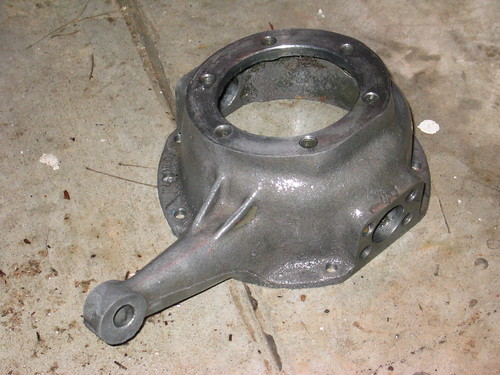
Here is the transmission cross member - I stuck half of it in the caustic for four hours and then in the acid for four hours. It had already been pretty well degreased, but still had some crud and rust on it. Before the treatment it looked pretty much consistent - look at it now (bottom is obviously the treated part).
So, what do you think? It's a lot easier than scrubbing and wire brushing, and seeing as how I do not have a sand blasting set up, it looks to be a good option for things that will fit in the buckets! I want to get some sort of mesh container that will fit in the buckets that I can put small parts in.
I am going to work on putting the axle back together this weekend - various tasks. I'll report on that Sunday or Monday. ciao.
NOTE: FOR SAFETY REASONS YOU, AS I DO, MUST WEAR PROPER PROTECTIVE EQUIPMENT WHEN DEALING WITH CHEMICALS THIS DANGEROUS, AND THEY ARE DANGEROUS. SAFETY GLASSES AND HEAVY DUTY CHEMICAL RESISTANT GLOVES (NOT LATEX EXAM GLOVES) ARE A MUST. THIS STUFF MUST BE KEPT OUT OF REACH OF CHILDREN AND ANIMALS.

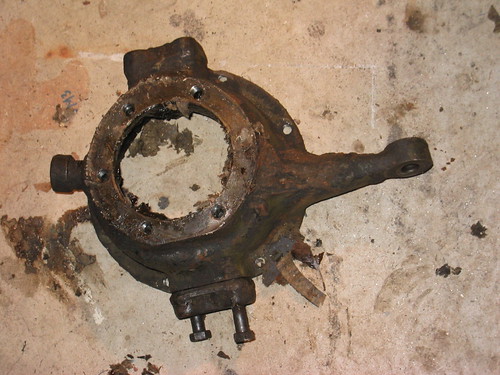
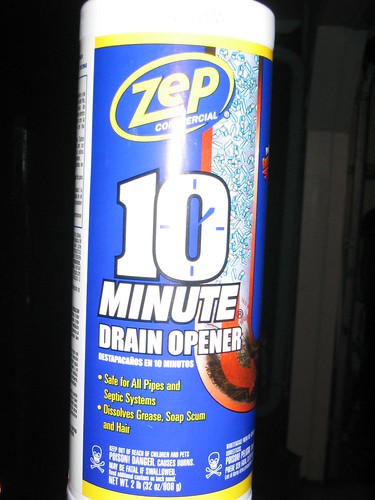
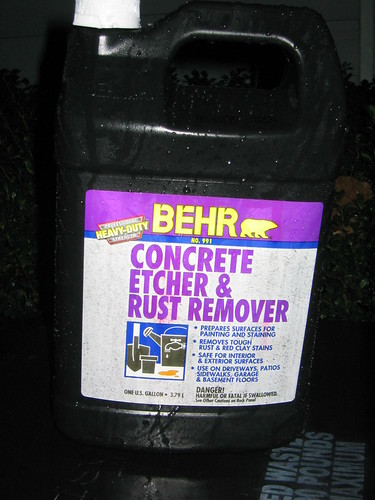
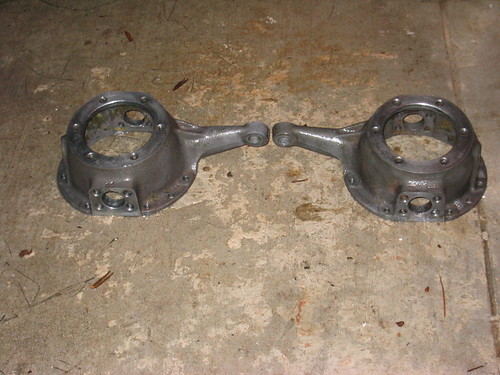
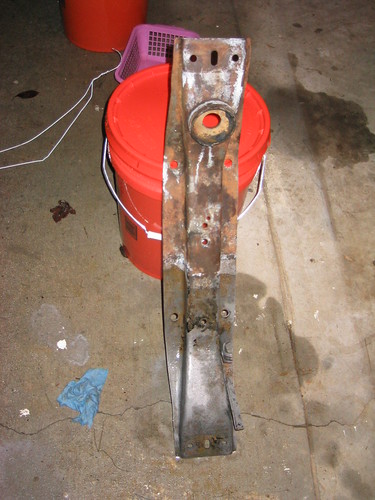



No comments:
Post a Comment